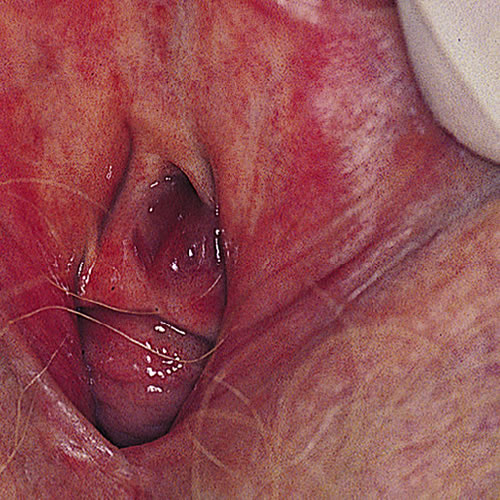Introduction
A urethral caruncle1 is a common, benign, polypoid growth derived from the posterior urethral mucosa.
Epidemiology
Most lesions occur in menopausal women.
Etiology
The etiology is unknown. It is believed to be an ectropion of the urethral mucosa. It may be related to trauma, altered environment, chronic irritation, or infection.
Symptoms and clinical features
The lesions are asymptomatic but they can cause pain, dysuria, and bleeding.
A urethral caruncle is a flesh-colored to red, solitary, polypoid tumor that is 0.5 to 1 cm in diameter and is usually seen as a bright red nodule at the urethral meatus.

Diagnosis
Diagnosis is obtained with biopsy but these can be recognized clinically. Biopsy should be done if there is concern about possible carcinoma.
Pathology/Laboratory Findings
Histologically, the lesion has a polypoid or papillary configuration and is lined by sometimes hyperplastic squamous or transitional cells with abundant vessels and inflammatory cells in the stroma.2
Differential diagnosis
Differential diagnosis includes hemangioma, polyp, urethral prolapse, and urethral carcinoma.
Treatment/management
For small asymptomatic lesions, no treatment is needed. Small symptomatic lesions can be destroyed with electrodesiccation, cryotherapy, or excision under local anesthesia. Larger lesions require general anesthesia and the skills of an urologist. Because these lesions often occur in a state of decreased estrogen (e.g. postmenopausal), they may disappear if the woman is treated with localized, topical estrogen cream.